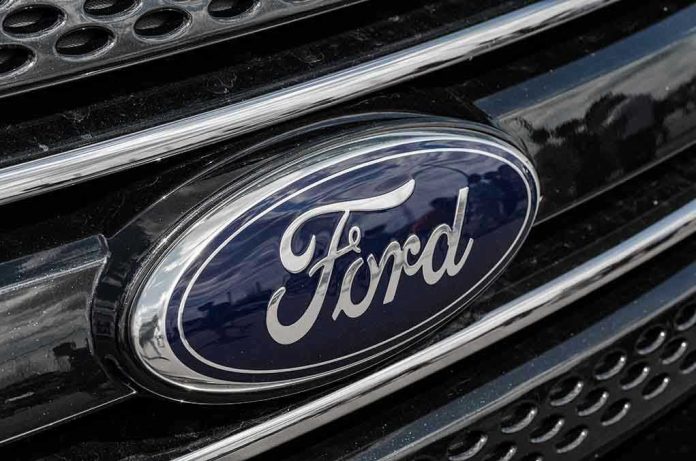
One minute you’re driving a rugged Ford Super Duty, the next—your steering wheel goes limp, and control slips through your fingers; Ford’s latest recall is a stark reminder that even giants can falter when safety’s on the line.
Story Snapshot
- Ford is recalling over 115,000 Super Duty trucks due to a defect that can lead to sudden loss of steering control.
- The defect involves the steering column’s upper shaft, with repairs coordinated through dealers and owner notifications beginning soon.
- No major injuries or accidents have been reported, but the scale and severity of the recall are raising industry-wide concerns.
- This event highlights regulatory oversight, brand reputation risks, and possible long-term effects on automotive quality assurance.
Ford Faces Major Recall: Anatomy of a Safety Crisis
Ford Motor Company’s recall of more than 115,000 Super Duty pickup trucks isn’t just another line in a long list of automotive service bulletins. The core issue—a potentially catastrophic defect in the steering column’s upper shaft—has brought the world’s attention to the fragile intersection of engineering ambition and public safety. This is not a minor inconvenience for weekend warriors; it is a direct challenge to the trust commercial operators and families place in one of America’s most iconic vehicles. Ford’s internal review in mid-2025 uncovered a flaw that, if left unchecked, could result in total loss of steering control, and that stark reality prompted a rapid escalation to the National Highway Traffic Safety Administration.
Dealers will be on the front lines, with notification scheduled for September 23, 2025, and owner notices rolling out in early October. The urgency is clear: a steering failure at highway speeds is more than a mechanical issue—it’s a life-or-death scenario. Ford’s response, while methodical and by the book, is also a testament to the ever-present pressure automakers face to identify, own, and resolve potentially fatal flaws before tragedy strikes. This recall is a test not just of Ford’s engineering, but of its crisis management and transparency in an age where every misstep is magnified by regulatory and public scrutiny.
The Regulatory Gauntlet: Compliance, Oversight, and Public Trust
NHTSA’s role in this saga cannot be overstated. As the watchdog agency charged with safeguarding America’s roads, its involvement signals the seriousness of the defect and the non-negotiable imperative for compliance. Ford’s recall process is unfolding in the shadow of heightened scrutiny, with every step—dealer updates, owner mailings, public announcements—meticulously documented and timed. The relationship between automaker and regulator is adversarial by design, yet it’s also symbiotic; Ford needs NHTSA’s stamp of approval to maintain its license to operate, while NHTSA relies on corporate transparency to enforce public safety. This dynamic shapes not only the recall’s execution but also the lessons that will echo throughout the industry as competitors and safety advocates watch closely.
Previous steering-related recalls have resulted in lawsuits, regulatory penalties, and, in some cases, congressional hearings. Ford’s measured communication thus far—emphasizing the absence of reported injuries—reflects both a desire to reassure customers and a keen awareness that any hint of delay or obfuscation could trigger a reputational firestorm. The stakes are high: trust, brand equity, and, ultimately, the safety of every driver behind the wheel of a Super Duty truck.
Ripple Effects: Industry Response and the Road Ahead
This recall’s impact goes far beyond the immediate inconvenience to truck owners. Commercial operators may face costly downtime, while dealerships brace for a surge in service demand that will test their capacity and logistical agility. The automotive sector as a whole will be watching for signs that similar defects could lurk in rival models, potentially triggering a wave of preemptive checks and recalls. Industry analysts suggest that the incident may serve as a catalyst for stricter quality assurance protocols and renewed investment in steering system design—a system that, when compromised, leaves no margin for error.
For Ford, the long-term consequences are still unfolding. The company must balance immediate corrective actions with strategic communication to rebuild consumer confidence. Meanwhile, regulatory bodies could leverage this case to push for tougher standards across the board, reshaping the landscape of automotive safety oversight. The recall offers a textbook case in crisis containment, but also a cautionary tale: in the age of mass production and global supply chains, a single flaw can ripple outward, challenging not just corporate reputations but the very fabric of public trust in modern engineering.






